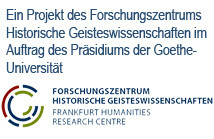Theodor W. Adorno (1903-1969)
No other representative of the “Frankfurt School” of critical social theory had such close links with Frankfurt as Theodor W. Adorno (1903-1969). He was born in in the city, the only child of the wine merchant Oscar Wiesengrund and his wife Maria, née Calvelli-Adorno, who was a singer. Maria’s sister, a pianist, also lived in the Wiesengrund household. Under the tutelage of these two “mothers”, in an atmosphere infused with music, the young Theodor Wiesengrund-Adorno spent his childhood years. More
Helmut Coing (1912-2000)
Helmut Coing (1912-2000) was one of the most renowned and influential legal scholars of the 20th century. But his accomplishments extended far beyond his two main areas of research—the philosophy of law and the history of European law: Coing dedicated himself to the development and expansion of the (west) German university system and its research facilities after the Second World War; he worked on numerous committees and also chaired or sat on the advisory boards of major scientific and cultural foundations. He was a loyal member of the Goethe University, to which he remained faithful—despite a number of offers from other universities—from his habilitation (the post-doctoral qualification for a university teaching career) in 1938 and his subsequent appointment as Professor for Civil and Roman Law in 1948, up to his retirement as Professor emeritus in 1980. For his services to culture and the sciences, in 1958 he was awarded the Goethe Medal of the City of Frankfurt. More
Gisèle Freund (1908-2000)
Many famous writers, intellectuals, politicians, and artists of the 20th century—to include Virginia Woolf, Stefan Zweig, Walter Benjamin, James Joyce, Frieda Kahlo, Eva ‘Evita’ Perón, François Mitterand and many others—have one thing in common: they have all been recorded for posterity through the lens of the Franco-German photographer and historian of photography Gisèle Freund (1908-2000). Her pictures are a part of Freund’s life work, which comprises over 80 portraits and at least as many photo reportages, not to mention her scholarly works on photography. More
Max Horkheimer (1895-1973)
The founder of the “Frankfurt School” hailed from Stuttgart. Max Horkheimer (1895-1973) was the only child of a conservative Jewish businessman who had established a factory in Stuttgart-Zuffenhausen for manufacturing synthetic cotton. From the beginning, the father firmly intended his son to take over the business. After completing the Lower Secunda (the 10th year of schooling), Max Horkheimer was taken into the firm as an apprentice, and after a lengthy stay abroad, he became junior manager at the age of 19. More
Fritz Neumark (1900-1991)
The political economist Fritz Neumark (1900-1991) was one of the most influential German finance experts of the post-war years. As both academic researcher and policy advisor, he developed the foundations of a modern fiscal policy that decisively shaped the economic order of the Federal Republic. More
Nina Rubinstein (1908-1996)
In 1933, the finished manuscript of her dissertation lay on her desk in Frankfurt University when the National-Socialists occupied the building, denying Nina Rubinstein further access to her office. She just managed to rescue the manuscript with the help of a colleague and fled with it to Paris, where she lived in exile until 1940. Only decades later was the sociologist, photographer, and interpreter Rubinstein able to defend her dissertation in Frankfurt: in 1989, the Goethe University bestowed the doctoral title that had taken so long to earn on the then 81-year-old. More
Norbert Wollheim (1913-1998)
We are saved, but we are not liberated. (Norbert Wollheim, August 1945)
This sentence is written in large letters on the inner wall of the former gatehouse in Fritz-Neumark-Weg. The Norbert Wollheim Memorial on the Westend Campus consists of the gatehouse and 13 aluminium panels displaying historical photographs. The memorial, opened in November 2008, honours this campaigner for concentration camp survivors’ entitlement to compensation; as such it stands for all prisoners who suffered in the Buna/Monowitz concentration camp (Auschwitz III). Located on the site of the former chemical concern headquarters, the memorial bears witness to the gruelling campaign for justice he waged—a campaign that continues to this day—and also reminds visitors of the crimes committed by IG Farben. But above all, it honours the people murdered in the Buna/Monowitz concentration camp, who came from almost all the countries of Europe. More






